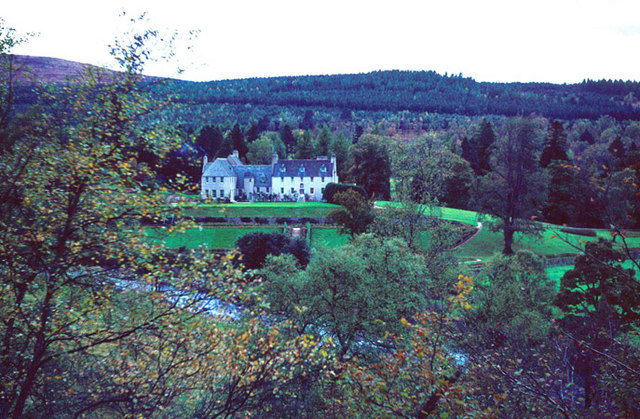Balmoral Castle is The Queen’s private summer residence, which is frequented every year from July to October. Owned by the royal family for over 170 years, the estate is a large-scale sanctuary nestled in the heart of the Scottish countryside. Here is a look at Balmoral Castle:
When the Queen isn’t residing in Her Majesty’s London headquarters of Buckingham Palace or spending the weekend at Windsor Castle, The Queen and extended family spend the summer at Balmoral Castle set within the Cairngorms National Park.

The royal estate borders the River Dee to the north and the mountainous Munros at the edge of Corrie Fee Nature Reserve in the south. The grounds of the estate include 8,000 acres of trees and forestry, grouse moors, lakes and farmland. As well as royals and their staff, the estate is also inhabited by red grouse and red deer.
There are roughly 150 buildings within Balmoral estate, these include staff quarters, offices, hunting lodges, holiday cottages, a Malt whisk

Another notable property on the Balmoral estate is Birkhall, which serves as the Scottish home of The Duke and Duchess of Cornwall, on a stretch of land that was added to the Balmoral estate in 1849 when Prince Albert purchased the property. The estate was gifted to his eldest son, Edward, who stayed in the house only once, because of this it was subsequently returned to Victoria and Albert for successive royal generations. Before its current occupants, the house was previously the holiday home of the Queen Mother who began staying at the property in the 1930s when King George V lent his son and daughter-in-law the property.

Located in the immediate vicinity of the castle is Garden Cottage, which was Queen Victoria’s ‘writing cottage’ where she would write her diary, attend to some State correspondences and sometimes take her breakfast. The property is also referred to as ‘Tam-Na-Ghar‘ and is rumoured to be the holiday home of The Duke and Duchess of Cambridge when they visit The Queen every summer.
There are many other cottages and bothies across the estate including easily the prettiest placed lodge of them all: Glas Allt Shiel, which has lakeside views at the shore of Loch Muick. With definite Skyfall vibes, this grey stone lodge is largely used by The Queen and family for picnics. Though Queen Victoria called it her ‘little bothy’ the lodge is actually made up of fifteen rooms. It does, however, have an active bothy on the site (though this is of standard size).

The Queen also purchased the 7,500-acre estate of Delnadamph Lodge just north of Balmoral. It was punched in 1978 for £750,000 as a superior stretch of moorland for grouse shooting. It was then gifted to Prince Charles and his then
There are also

Originally, there was a castle of a much smaller size, which stood on the site more than 170 years ago. When Queen Victoria and Prince Albert acquired the estate, the castle was considered much too small for the large family and their guests so Albert oversaw the construction of a newer, larger property. The iconic turreted house visitors see today, with its clock tower and stunning porte cochère, is a result of Prince Albert’s designs.
The interiors of the castle feature a sweeping staircase with cast iron bannisters, neo-gothic arches and pillars, a wealth of tartan and antlers, all sweeping around an internal courtyard, with an additional servants wing, home to the castle’s ballroom. Interior decor remains much as it did when Queen Victoria and Prince Albert first had the space decorated, with lots of pine woods, Queen Victoria emblem wallpaper, statues and portraits of Prince Albert and his children, and dated carpets and matching furnishings.
Press photos of the Queen receiving various diplomats in the drawing room also show that the interior decor hasn’t changed a bit in any of the reception rooms, right down to the vivid green carpet. See more images from inside Balmoral Castle in this post.
Use the ‘royalty‘ tag to view more posts detailing the homes and residences of The Queen and family including Buckingham Palace and Clarence House
feature image: W. Bulach, CC BY-SA 4.0, via Wikimedia Commons

